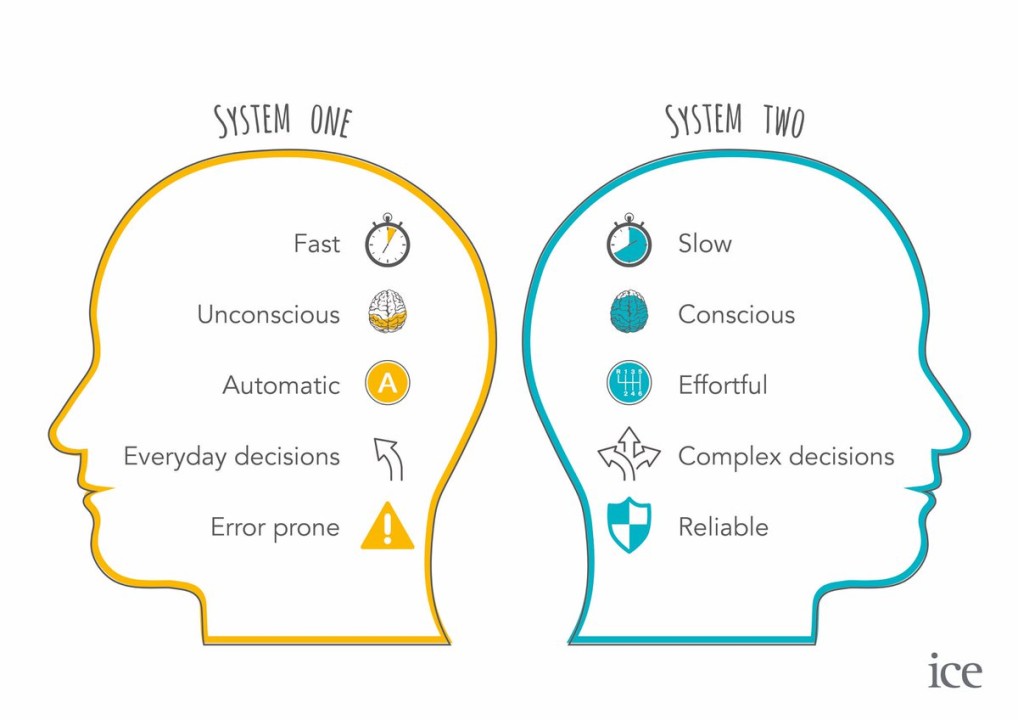Old farmer McGinty needed to plow his field before the dry spell set in, but his plow was broken.
“Well, I will just ask my neighbor Murphy to borrow his plow. He is a good man; I’m sure he’ll have done his plowing by now and he will be glad to lend me his.”
So Farmer McGinty began walking to Farmer’s Murphy’s home. After a while walking, McGinty says to himself, “I hope Murphy has finished his plowing or he won’t be able to lend me his machine.”
Then after a few more minutes of worrying and walking, McGinty says to himself, “What is Murphy’s plow is too old, he’ll never want to lend it to me.”
And after another few minutes, McGinty says, “Murphy was never a helpful fellow, I bet he won’t lend me his plow even if it is in perfect condition and he finished his plowing weeks ago.”
McGinty makes it to Farmer Murphy’s and knocks on his door. Murphy answers, “Well good morning McGinty! What can I do for you?” McGinty squirms, his heart races, and his eyes bulge, “You can take your damn plow and stick it up your ***!”

Heuristics. A short cut our brain takes to quickly solve a problem, answer a question, or make a decision. Our brain is fascinating, it takes information from our past or current data and quickly creates a response to what we are seeing or taking in. This saves on time and having to dig through large amounts of information. Heuristics allow us to use the “rule of thumb” or even deep intuitions to assess and quickly answer without in-depth thinking. The problem is our cognitive biases. Although each of us uses heuristic or fast thinking, our system 1 as explained by Daniel Kahneman in Thinking Fast and Slow, we can many times fail to make the correct assumption regarding what we are faced with. Heuristics fail as a result of your cognitive bias.
Poor old Farmer McGinty was boot deep in Pessimism Bias. Have you found yourself in this situation?
For example, have you sent a very important email to your manager and not received a response? What goes through your mind?
“She must just be busy” to “What is her problem, why is she not answering, does she think she is better than me?” to “I can’t believe it, this is the day, I’m going to be fired!” to “Why would you do this, this is insane I’m your best employee!”
In these situations, our fast brain kicks in and assesses the information and forms an answer. In the above example the “rule of thumb” is the company is going through cuts, people are losing their jobs. Concurrently, your bias kicks in and tells you that you’re doomed to lose your job, simply because an email wasn’t responded to.
The nature of heuristics and cognitive bias is it is all subconscious, so you can never fully stop these thought processes. However, you can be more aware of how they may cloud your decision making, enhance pessimism, and could result in a poor reaction.
This is where critical thinking is key in your success.
We are faced with thousands of decisions to be made each day. Allowing heuristic, fast-thinking can save us from decision-making fatigue, when faced with our cognitive biases however, we must clue into what is actually taking place.
It has also been said that those who are deeply intuitive have actually developed this by practicing critical thinking through situations, thereby making it second nature or intuitive and triggering the fast thinking system in the future.
Here are 4 steps to use your more critical brain in fending off some of your hampering heuristics (Poor Farmer McGinty!)
1. Pause
Don’t act. Wait for the feelings and thoughts to slow.
2. Emotion…Less
Consider your answer. Is there bias at play? Kahneman writes the “primacy of our conclusions does not mean that your mind is completely closed and that your opinions are wholly immune to information and sensible reasoning.”
Yes, you can be reasonable. You must set the emotions aside.
3. Play Devil’s Advocate
What other choices could you make? How would that play out? Consider all the alternatives. Have you reacted similarly in the past? “A reliable way to make people believe in falsehoods is frequent repetition because familiarity is not easily distinguished from truth.”
4. Act
You have critically assessed the information you received, took emotion out of the situation, considered all conclusions and now it’s time to act. Are your next steps in line with your original choice? How have they changed? Or, after having considered all options will you continue to follow your heuristic choice?
Heuristics are generally a helpful tool in saving us from decision fatigue. However, our biases can greatly skew the information we process and choose to act on. In practicing the 4 steps you will become aware of your biases and make deeper more critical choices. The act of practicing these four steps will actually create a learned process and it will in the future, kick in as if it were intuitive heuristic thought.
References
Kahneman, Daniel. (2011) Thinking Fast and Slow. Penguin. Great Britain. 29, 62, 103
Business Balls. (2019) Murphys Plough.https://www.businessballs.com/amusement-stress-relief/murphys-plough-positive-thinking-story/


